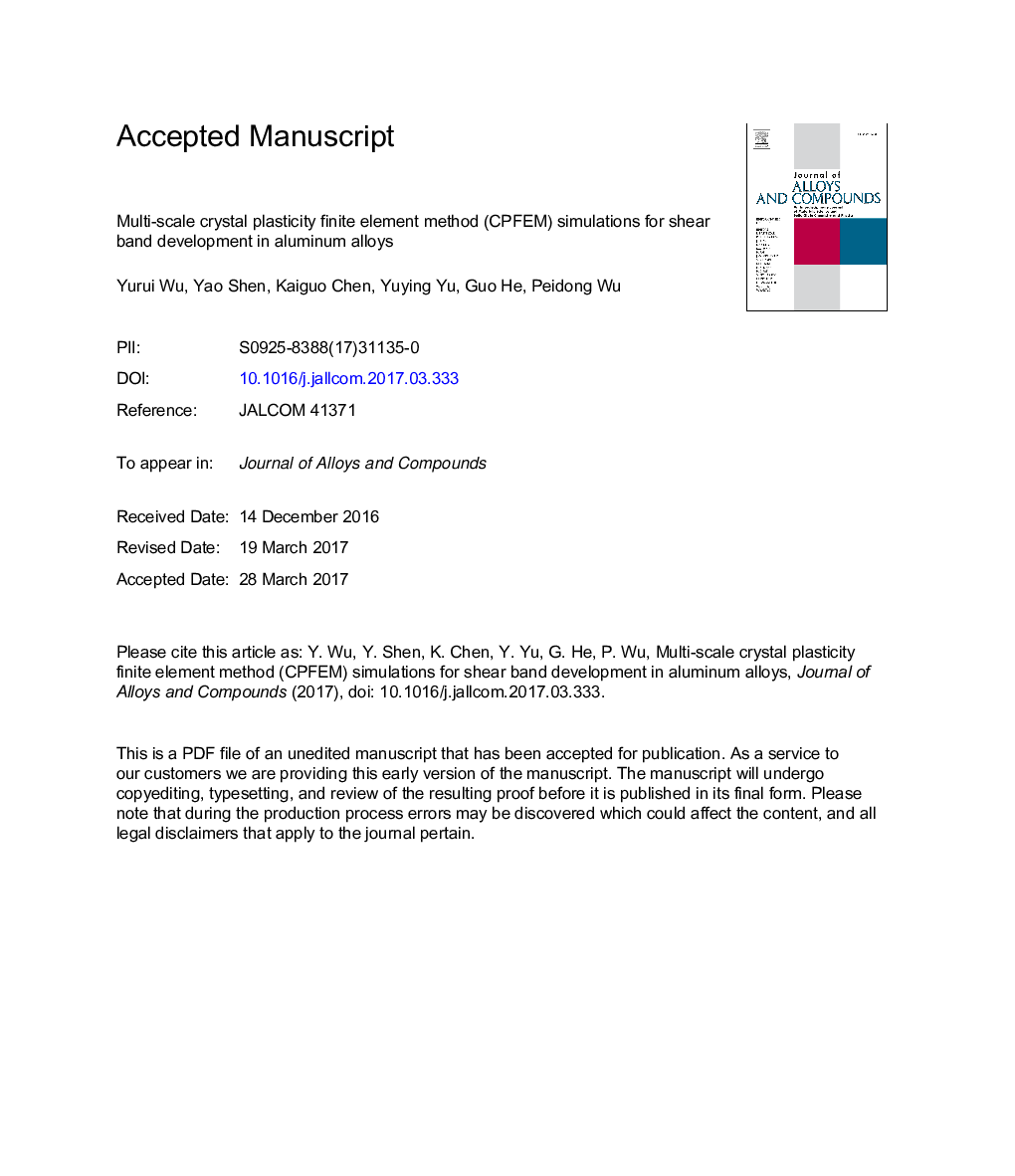| کد مقاله | کد نشریه | سال انتشار | مقاله انگلیسی | نسخه تمام متن |
|---|---|---|---|---|
| 5459285 | 1516183 | 2017 | 47 صفحه PDF | دانلود رایگان |
عنوان انگلیسی مقاله ISI
Multi-scale crystal plasticity finite element method (CPFEM) simulations for shear band development in aluminum alloys
دانلود مقاله + سفارش ترجمه
دانلود مقاله ISI انگلیسی
رایگان برای ایرانیان
کلمات کلیدی
موضوعات مرتبط
مهندسی و علوم پایه
مهندسی مواد
فلزات و آلیاژها
پیش نمایش صفحه اول مقاله

چکیده انگلیسی
Multi-scale Crystal Plasticity Finite Element Method (CPFEM) simulations including macro-, meso- and microscale are applied to study the shear band development in cold-rolled AA5182-H28 aluminum alloy sheets under simple shear along various directions with respect to the rolling direction. The resolution and the computational cost in predicting the development of shear bands are compared among the three simulation scales. In macro-, meso- or microscale, each element represents an aggregate of polycrystal, a single crystal or part of a grain, respectively. The constitutive response of an integration point is thus described by the Taylor-type polycrystalline model in the macroscale, or by the single crystal constitutive model in the two finer scales. A common feature predicted by simulations at the three scales is that the development of shear bands is highly anisotropic. This is most clearly revealed by simulations at the microscale: (1) no shear band forms along RD (Rolling Direction); (2) some shear bands develop then delocalize afterwards along RD20 (20° from RD); (3) severe shear bands develop along RD45 (45° from RD) and (4) some weak and discrete shear bands form along TD (Transverse Direction). However, the capability to capture the development of shear bands with different degrees of localization is not the same for the three simulation scales: for cases with severe/no shear band forming, simulations in all the three scales can capture the features, however, for cases with weak shear banding, only the microscale simulations can give right predictions. The cost of the three scales is also quite different: the computation time increases nearly an order of magnitude when the simulation runs at a lower scale. Therefore, in view of both the resolution and the cost, appropriate simulation scale can be chosen to study the development of shear bands according to the degree of localization: for cases with severe/no shear band forming, a macroscale simulation with Taylor-type model is sufficient to give good predictions; but for cases with weak shear bands formation, a microscale simulation is needed. For this strategy to work, a quick estimation is needed first for the extent of shear band development for all cases of concern, which can be accomplished using the one-element method proposed by Wu et al. [29].
ناشر
Database: Elsevier - ScienceDirect (ساینس دایرکت)
Journal: Journal of Alloys and Compounds - Volume 711, 15 July 2017, Pages 495-505
Journal: Journal of Alloys and Compounds - Volume 711, 15 July 2017, Pages 495-505
نویسندگان
Yurui Wu, Yao Shen, Kaiguo Chen, Yuying Yu, Guo He, Peidong Wu,